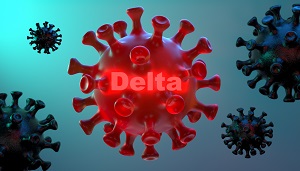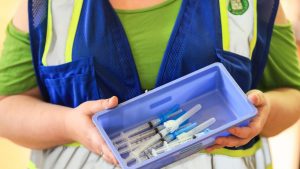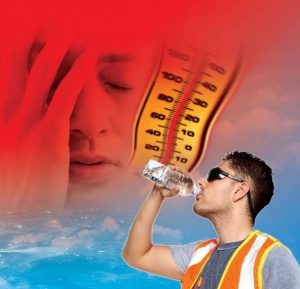
Safety News
July 2021

COVID-19: Delta Variant
We thought things were finally starting to smooth out just a tiny bit. WE THOUGHT WRONG.

Health leaders in Oklahoma continue to stress that they are seeing an uptick in new COVID-19 cases as the delta variant spreads across the Sooner State. At this point, officials say Oklahoma ranks 12th in the nation in the number of reported COVID-19 cases per 100,000 people. According to data from the Oklahoma State Department of Health, patients who are between 18 and 35-years-old make up more than 31% of the state’s COVID-19 cases. Oklahoma health experts say that spread is likely being fueled by the delta variant, which is responsible for huge outbreaks across Arkansas and Missouri.
At the same time, Oklahoma doctors are paying close attention to another COVID-19 variant that is spreading around the globe. World Health Organization officials have signaled “Lambda” as a variant “of interest,” and though the WHO hasn’t categorized it as a “variant of concern” yet, that could change as experts learn more. The Delta variant still remains the dominant strain in the United States, but the Lambda, which is spreading quickly in South America after it was first identified in Peru in late 2020, has been detected in Nevada and Utah, among other U.S. states. Global science initiative GISAID counted 680 U.S. cases of the variant as of Monday.
In the end, Oklahoma experts say the vaccine is the best defense we have against COVID-19.

![]()
Heat Stress Safety Talk
Heat Stress
Heat stress can be a killer on the jobsite. Deaths from heat-related issues between 2005 and 2009 rose to higher rates than any others observed during any other 5-year periods in the past 35 years. Outside of the direct consequences such as heat stroke, heat stress can cause incidents due to loss of focus or excessive fatigue on the job.
Heat-Related Illnesses: (Source: www.WebMD.com)
Heat Cramps: Are painful, brief muscle cramps. Muscles may spasm or jerk involuntarily. Heat cramps can occur during exercise or work in a hot environment or begin a few hours later.
Heat Exhaustion: There are two types of heat exhaustion. 1. Water depletion: Signs include excessive thirst, weakness, headache, and loss of consciousness. 2. Salt depletion: Signs include nausea and vomiting, muscle cramps, and dizziness.
Heat Stroke: Heat stroke is the most serious heat-related illness. Heat stroke can kill or cause damage to the brain and other internal organs. Heat stroke results from prolonged exposure to high temperatures, usually in combination with dehydration, which leads to failure of the body’s temperature control system.
Medical Response
If anyone is displaying symptoms of a heat-related illness, it is important to get them the proper medical attention they need before the problem turns into heat stroke. For people displaying symptoms of heat exhaustion, have them stop work and get to a shaded area. The affected person needs to consume water or electrolyte replacing sports drinks. The person should not return to work the rest of the day.
Anyone who is displaying symptoms of a heat stroke, immediate medical attention is needed. Delaying calling 911 could result in irreversible injuries or death. Symptoms of heat stroke include fainting, throbbing headache, dizziness, lack of sweating, vomiting, or behavioral changes such as confusion. The person should be cooled down immediately in a shaded area or indoors. DO NOT put ice cold water on the victim as this can cause shock. Use cool water to lower the body temperature of the victim. Remove any unnecessary clothing and fan the victim until medics arrive.
Safe Work Practices to Prevent Heat Related Illnesses 
- Allow for acclimatization to a hot environment before any strenuous work begins. It takes roughly two weeks for an individual to acclimate to a hot environment.
- Drink plenty of water during strenuous activities especially in hot environments. An average person sweats between roughly 27 oz. to 47 oz. per hour during intense labor. To put that amount into perspective, an average water bottle holds 16.9oz.
- Take frequent breaks in the shade or indoors where there is AC.
Take heat stress seriously. Know the signs and symptoms of heat stress. Have a plan to get the proper medical attention for any individual displaying symptoms of heat stress. Dealing with heat stroke especially, it may mean the difference between life and death.
